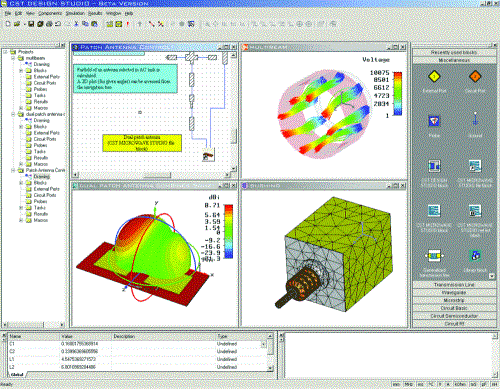
Buckling, Postbuckling and Collapse Analysis with Abaqus. Automotive Powertrain Assembly Analysis with Abaqus. Analysis of Geotechnical Problems with Abaqus. Analysis of Composite Materials with Abaqus. Additive Manufacturing Scenario Essentials. Abaqus/CAE: Geometry Import and Meshing. Introduction to Abaqus/Standard and Abaqus/Explicit. The antenna geometry is shown in Figure 1. These dimensions were obtained using a quasi-newton-opimiser, optimising for the full coverage of three wireless bands. The tap-off point is located h,=2mm above the groundplane. The dimensions of the antenna are 1,=28mm, /~15.Smm, w ~ l m m. The monopole is fed by a wF2mm wide microstrip feedline. The dimensions of the substrate are 1=45mm by w=80mm by ~ 1. Antenna Geometry The triple band monopole is printed on one side of an FR4 substrate with a square groundplane located at the back. In this paper, a simple multibranch monopole printed on low-cost laminate is proposed as a triple-band terminal antenna, offering all of the above requirements to a greater degree. The printed monopole is a suitable candidate with many variations proposed for dualband operation [l-41. 
Many trade-offs are commonly made, juggling between parameters. The requirements of antennas to be small, low-cost, have quasi-isotropic patterns over wide or multiple bandwidths and be integratable into radio circuitry are generally not always attainable. introduction The proliferation of wireless communications systems has placed enormous demands on antenna development.

Parameters of the antenna geometry are varied and the effects of these variations on the impedance bandwidth are shown.

The antenna is designed to operate in three bands which cover virtually alf wireless channels. This paper presents a printed triple-band multibranch monopole for use in modern wireless systems.







 0 kommentar(er)
0 kommentar(er)
